Fantastic Folklore: Blue Hen’s Chicks, A Folktale
What is Folklore?
Have you ever wondered where contemporary authors get ideas? They get their concepts from stories spoken or written hundreds of years ago. These types of stories are called Folklore. Folklore is a term for a collection of traditional stories that embrace culture and society. There are many types of folklore. Folklore is just not a story; it can be art, songs, dances, sayings, beliefs, and superstitions. Folktales, myths, legends, and fables are the most common folklore stories. Folklore can be used to help people study other cultures, model positive character traits, and discover a love of reading.
Join us weekly to delve into the world of Folklore. You will visit each kind of folklore and take with you some of the most cherished stories ever told.
Folktales
Folktales are a subset of folklore. A short, simple story told for entertainment and to teach values and morals important to a particular culture. Historically, folktales were passed down verbally from generation to generation though many of the stories can now be found in written language. Typically, the original author is unknown. However, folktales are often found in many different versions from culture to culture but they present the same common theme or lesson. Folktales describe how the main character copes with the events of everyday life. Generally, a strong conflict and resolution is found in the story. As children, we might have read many tall tales and fairy tales. Fairy tales are a subset of folktales.
Characteristics of Folktales
- The characters are ordinary humans or animals that act like humans. Many times, humans are peasants, which have better values than the royalty does.
- The author writes using sequential or time ordered text.
- The author uses repetition of words, phrases, themes, or situations
- The author uses simple grammar and easy vocabulary
- The theme is related to problems that affect all ages
- The characters have standard physical characteristics: princess—beautiful
- Some characters have magical features
- Most cultures have trickster tales—a person or animal that outwits the others in the story
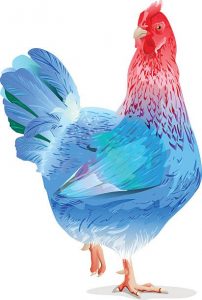
Blue Hen’s Chicks
A Delaware Tall Tale
retold by
S.E. Schlosser
A Delaware man went to war during the American Revolution. For entertainment, he brought with him two fighting cocks. When asked about these chickens, the soldier said slyly: “They are the chicks of a blue hen I have at home.”
Well, these cocks could fight! They were so fierce, they caused quite a stir among the men. It did not take long for the Delaware troops to begin boasting among the troops from the other states that they could out-fight anyone, just like those famous fighting cocks. “We’re the Blue Hen’s Chickens. We will fight to the end!” became the theme of the Delaware troops. The other troops took to calling the men from Delaware “The Blue Hen’s Chicks”, and to this day, Delaware is known as the Blue Hen State.
- Why do you think the soldier advertised the Blue Hen as such an important animal during the war?
What is the Delaware Blue Hen?
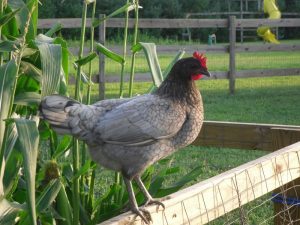
The Delaware Blue Hen is a land race of chickens that were developed during the American Revolutionary War. The birds originated from a strain of gamecocks owned primarily by Capt. John Caldwell, from Kent County, Delaware that were recognizable by their blue plumage and renowned for their pugnacity to the extent that Colonel John Haslet’s 1st Delaware Regiment were nicknamed “the Blue Hen’s Chickens.” The Delaware Blue Hen is a typical “blue” colored chicken, found in Blue, Black and Splash. They are single combed. The hens are Fair layers of tinted/white eggs, and occasionally go broody. The males generally need to be separated from each other once they reach maturity.
The University of Delaware mascot is also modeled after the Delaware Blue Hen and the college teams are nicknamed “Fightin’ Blue Hens”. Today, the University of Delaware’s College of Agriculture & Natural Resources maintains the largest known breeding flock of the Blue Hen Chicken. Their flock originated when they received six pairs from Hallock DuPont, in the 1960’s because the bird was their mascot.
Be it enacted by the Senate and House of Representatives of the State of Delaware in General Assembly met: Section 1. That from and after the passage of this Act the “Blue Hen Chicken” shall be and the same is hereby made the official bird of the State of Delaware. Approved April 14, 1939
Genetically, two Blue Hens will produce 50% blue, 25% white, and 25% black offspring, like other blue breeds. Breeding a splash and a black will result in 100% blue offspring.
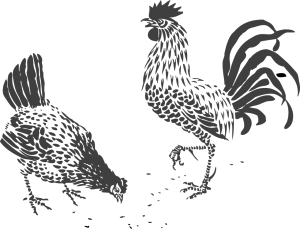
You have been hired to change Delaware’s official mascot, the Blue Hen bird. After reading facts about Delaware below, chose another Mascot for Delaware. Tell why you changed the Blue Hen to your chosen mascot.
The first of the original 13 states to ratify the federal Constitution was Delaware. It is the second smallest state in the country and one of the most densely populated. The state is divided into three counties—from north to south, New Castle, Kent, and Sussex—all established by 1682. Its population, like its industry, is concentrated in the north, around Wilmington, where the major coastal highways and railways pass through from Pennsylvania and New Jersey on the north and east into Maryland on the south and west. The state capital is located in Dover, the capital.
Date of Statehood: December 7, 1787
Capital: Dover
Population: 897,934 (2010)
Size: 2,489 square miles
Nickname(s): The First State; The Diamond State; Blue Hen State; Small Wonder
Motto: Liberty and Independence
Tree: American Holly
Flower: Peach Blossom
Bird: Blue Hen
Delaware Facts
*The first European colony in the Delaware Valley was established by Swedish settlers in 1638. Between 1698 and 1699, the descendants of these early colonists constructed Old Swedes Church (also known as Holy Trinity Church), which is one of the oldest houses of worship in America still in use.
*According to legend, Delaware was nicknamed “The Diamond State” because Thomas Jefferson referred to it as a “jewel among the states” due to its prime location on the Eastern Seaboard.
*The first bathing beauty pageant in which contestants competed for the title of “Miss United States” took place in Rehoboth Beach in 1880 to attract business during its summer festival. Inventor Thomas Edison was one of the contest’s judges.
*After the onset of World War II, several concrete observation towers ranging between 39 and 75 feet tall were constructed along Delaware’s coast to protect the bay and coastal towns from German warships. Eleven towers remain in Delaware and two remain in Cape May, NJ.
*Delaware Bay is home to more horseshoe crabs than anywhere else in the world. Mostly unchanged for the past 300 million years, these “living fossils” were collected by Native American Indians for food and used as fertilizer.
Read about some significant events that happened in Delaware!
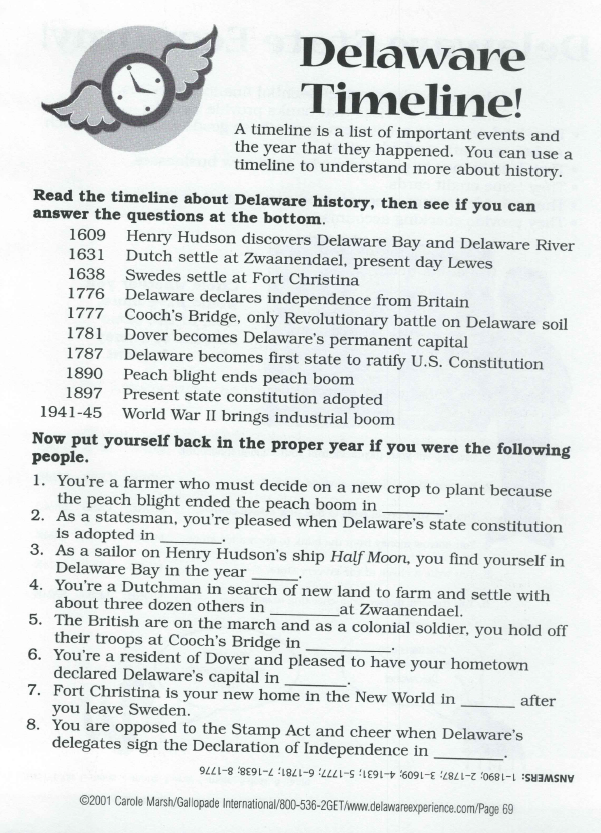
We all live in Delaware, but do we really know where places are in Delaware?
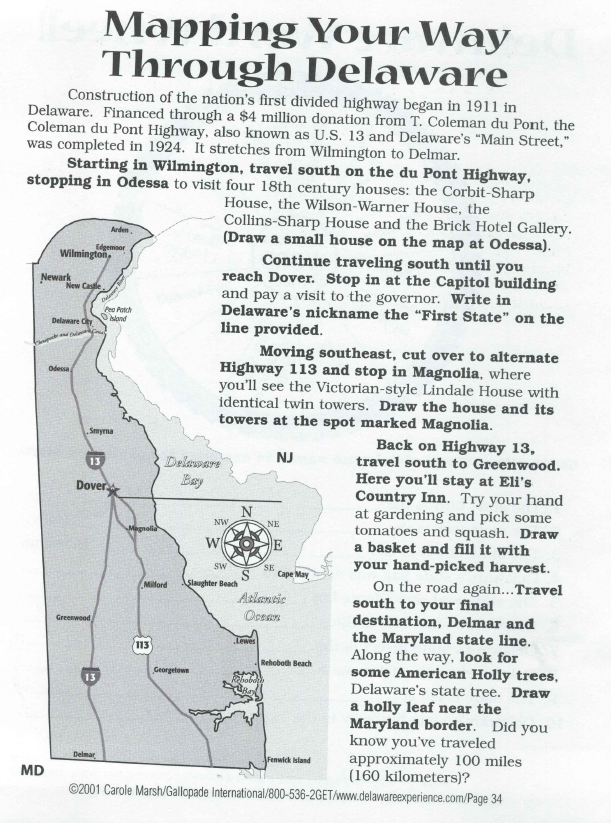
Do you have a younger sister, or cousin? If so, make her a Corn Husk Doll. This was a favorite toy in Delaware during the Colonial Times.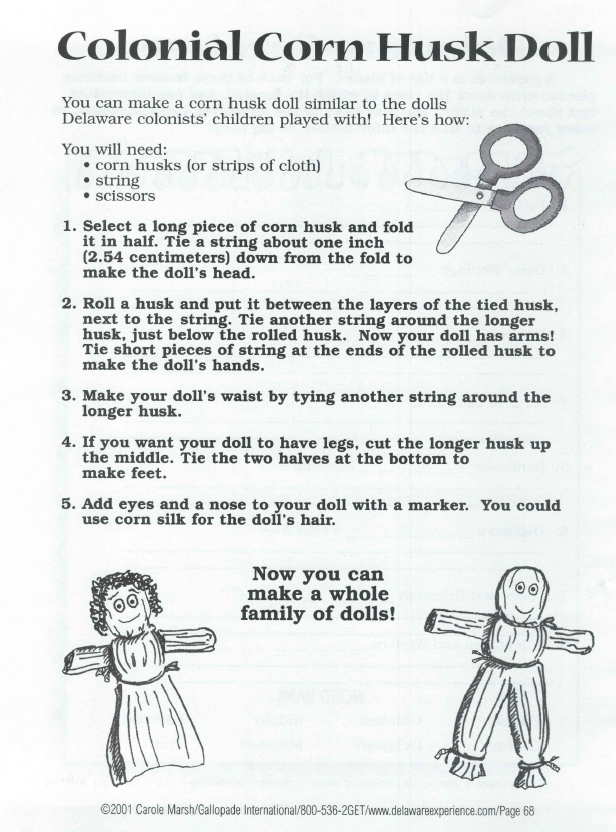
Now that you know a little more about Delaware, pretend that you are a colonist in the days of early Delaware. You keep a diary of what you do each day. Write in the diary what you might have done on a long, hot summer day in July 1775. If you need a little more information, click this site: https://www.ducksters.com/geography/us_states/delaware_history.php
A Day in the Life of A Colonist in Delaware
___________________________________________
____________________________________________
____________________________________________
____________________________________________

